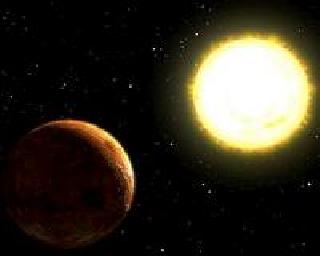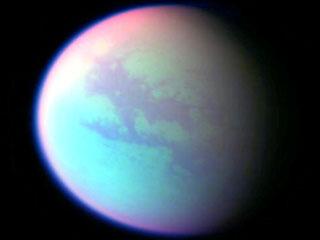
VANCOUVER (BNS): A ‘super-exotic’ exoplanet eight times as massive and twice as dense as our Earth has caught the attention of astronomers.
Fresh details about the planet, named 55 Cancri e, have made it the densest ever rocky planet spotted in the Universe to date.
The planet is 60 per cent larger in diameter than Earth but eight times as massive. Twice as dense as Earth – almost as dense as lead – it is the densest solid planet known, an international team of astronomers has found.
The 55 Cancri e, first spotted in 2004, lies about 40 light years from Earth. It revolves around its host star, 55 Cancri A, so closely that its year is less than 18 hours long. Each of its transit occurs in every 17 hours and 41 minutes.
“You could set dates on this world by your wrist watch, not a calendar,” says University of British Columbia (UBC) astronomer Jaymie Matthews, a member of the research team.
The temperature of 55 Cancri e, however, does not make it a life-harbouring planet. The temperature on the planet’s surface could be as high as 2,700 degrees Celsius.
“Because of the infernal heat, it’s unlikely that 55 Cancri e has an atmosphere. So this is not the type of place where exobiologists would look for life," says lead author Josh Winn of Massachusetts Institute of Technology (MIT).
However, 55 Cancri e is the type of place exoplanetary scientists will be eager to “visit” with their telescopes, says Winn.
“The brightness of the host star makes many types of sensitive measurements possible, so 55 Cancri e is the perfect laboratory to test theories of planet formation, evolution and survival,” adds the scientist.
While the planet is not visible, even through a telescope, its host star, 55 Cancri A, can be observed with the naked eye for the next two months on a clear dark night, say the researchers who have made the latest findings by using Canada’s MOST (Microvariability & Oscillations of STars) space telescope.
“It’s wonderful to be able to point to a naked-eye star and know the mass and radius of one of its planets, especially a distinctive one like this,” says Winn.
The team, from the Massachusetts Institute of Technology, the University of British Columbia, the Harvard-Smithsonian Center for Astrophysics and the University of California at Santa Cruz, has submitted its findings for publication in The Astrophysical Journal Letters.
 Previous Article
Previous Article Next Article
Next Article













The Indian Air Force, in its flight trials evaluation report submitted before the Defence Ministry l..
view articleAn insight into the Medium Multi-Role Combat Aircraft competition...
view articleSky enthusiasts can now spot the International Space Station (ISS) commanded by Indian-American astr..
view article